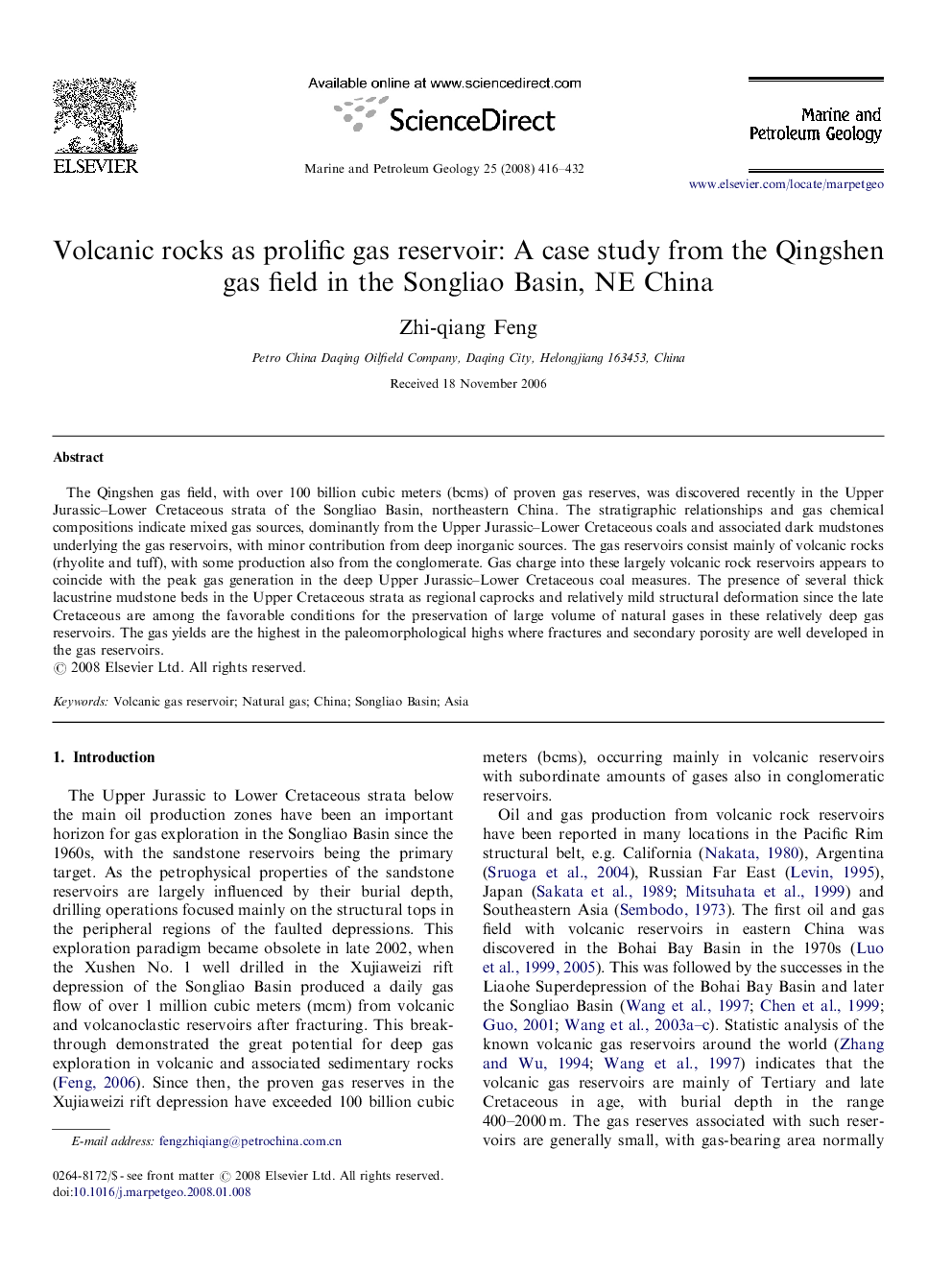| کد مقاله | کد نشریه | سال انتشار | مقاله انگلیسی | نسخه تمام متن |
|---|---|---|---|---|
| 4696640 | 1637186 | 2008 | 17 صفحه PDF | دانلود رایگان |

The Qingshen gas field, with over 100 billion cubic meters (bcms) of proven gas reserves, was discovered recently in the Upper Jurassic–Lower Cretaceous strata of the Songliao Basin, northeastern China. The stratigraphic relationships and gas chemical compositions indicate mixed gas sources, dominantly from the Upper Jurassic–Lower Cretaceous coals and associated dark mudstones underlying the gas reservoirs, with minor contribution from deep inorganic sources. The gas reservoirs consist mainly of volcanic rocks (rhyolite and tuff), with some production also from the conglomerate. Gas charge into these largely volcanic rock reservoirs appears to coincide with the peak gas generation in the deep Upper Jurassic–Lower Cretaceous coal measures. The presence of several thick lacustrine mudstone beds in the Upper Cretaceous strata as regional caprocks and relatively mild structural deformation since the late Cretaceous are among the favorable conditions for the preservation of large volume of natural gases in these relatively deep gas reservoirs. The gas yields are the highest in the paleomorphological highs where fractures and secondary porosity are well developed in the gas reservoirs.
Journal: Marine and Petroleum Geology - Volume 25, Issues 4–5, April–May 2008, Pages 416–432